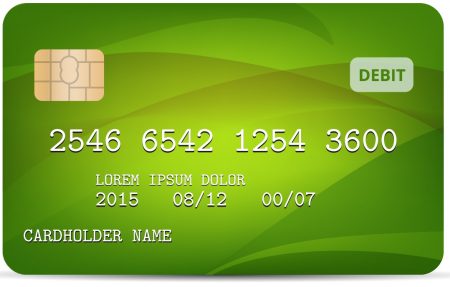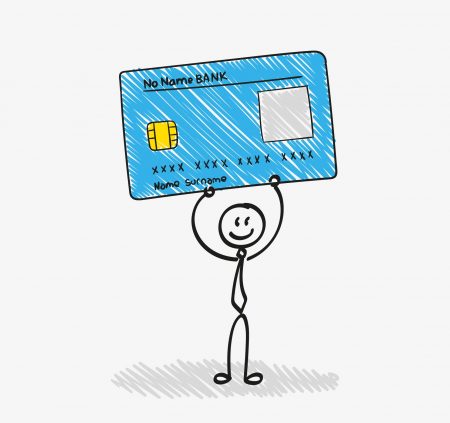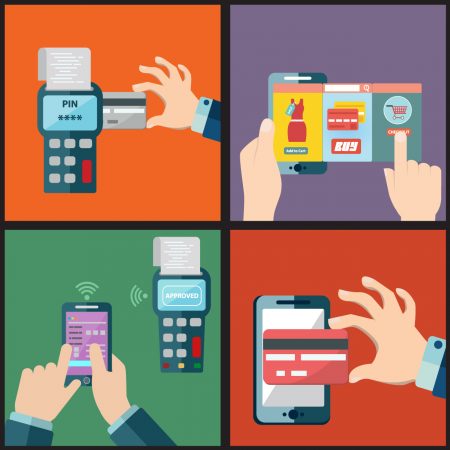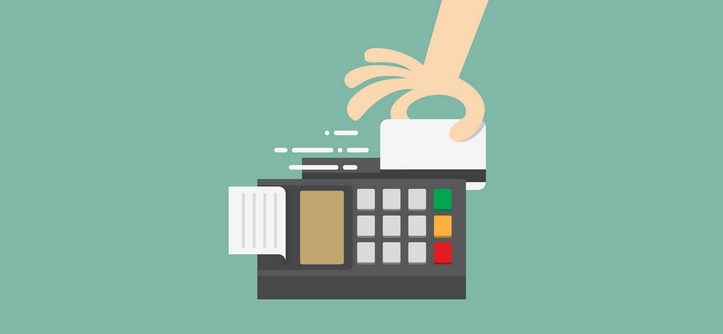It’s hard to imagine our lives without credit cards. Even before the dawning of the Internet Age, about 60% of adult citizens in the country had at least one credit card. Today, credit cards are also used to make online purchases and the demand for them has increased to the point that almost everyone has one credit card or more.
Transactions in which the payment is made by credit cards are the most common ones, both in the “real world” (where you can also pay by cash, sometimes by check or even by a bank transfer) and in online stores (where often you can also pay with PayPal and sometimes with bitcoin – the most popular digital currency).
To make the process of receiving payments from your customers most effective, and certainly when you sell products and services through clearing of credit card payments online, it is very important to get to know how things work and understand the terms used in this field. This post is your chance to gain full knowledge about payments with credit cards, here you will find a collection of all the information you need.
What is actually a Credit Card?
We all use them and we know they are a convenient payment method which also enables us to pay in installments over several months, sometimes in over 12, 24 or even 36 monthly payments. The fact that they have become so conventional is precisely the reason you should gain better knowledge about them – where they came from, what can be done with them these days, and what the future holds.
From the beginning of the twentieth century merchants used to extend credit to regular customers. Things have evolved slowly from cardboard cards issued by stores and large companies which were honored only by the place of business that issued them, through the 1940s and 1950s when US banks offered their customers a card which they could use for payments in local businesses. Merchants then transferred their demand for payment to the bank; the bank then paid and settled accounts with its clients by deducting the payment from their bank account balance. Only in 1961 a plastic card which looks like those we are familiar with first appeared. It was the Diners Club card which was used to pay mainly for products and services related to travel and recreation. American Express was also quick to issue plastic cards.
These ancient credit cards operated on the principle of a closed circle that is the buyer, the seller and the credit card company. Initially the customers had to pay the full amount which was made available to them by the credit card company at the end of each month; but quite soon credit card companies began to allow payment in installments.
In the 1970s Visa and MasterCard appeared. The huge credit card companies that banks and other institutions could make agreements with and offer their cards to customers of the bank. The transactions then became more complex because now they involved a client, a merchant, a credit company and the banks (the client’s bank and the merchant’s bank). Initially the information required for the transaction (cardholder name, bank account number, card number and expiration date) was embedded in the card with raised letters and numbers. Since the invention of the magnetic stripe that information is stored on that stripe, and since computer communications have developed enough, it is possible to scan the information from the magnetic stripe, transmit it in real time for approval, and execute the transaction according to the terms agreed by the merchant, the credit card holder and the credit card company. These days, credit card companies are moving to “smart cards” that contain a chip for electronic reading according to the EMV (Europay Mastercard Visa) standard.
One-time clearing compared with authorization to perform recurring clearing
Most credit card payments are performed through a single clearing process, even if the sum itself is divided into installments. In some transactions, the cardholder agrees that his credit card details will be kept and that the business will perform one more or several additional clearing actions, in the future, that is according to the conditions agreed in advance.
Recurring clearing is common when there are, for example, monthly subscription fees. The right to use the service is given as long as the monthly payments continue to be made automatically; if the cardholder instructs to discontinue them, then the subscription is not renewed. The model of recurring payments is called SaaS (Software as a Service) because it is very suitable for continuous use of software; the use is enabled as long as the subscription fees continue to be paid.
Basic Terms from the World of Credit Card Clearing
If you want to understand processes, technologies, tools, products and services that are associated with the use of credit cards, you need to know terms that are used in this field.
We gathered for you a list of such terms with a short explanation about each one.
- Credit cards, Charge cards, Debit cards – in Israel people refer to any plastic card that is used for payment as a “credit card”, but in English, a distinction is made between Credit, Debit and Charge cards.In fact, only Credit Cards are actual credit cards which enable deferring and/or spreading payments. By using a Debit Card, the payment amount is immediately withdrawn from the bank account balance, while the payment with a Charge Card is deducted at the end of the month (all payments made with the Charge Card during the month are deducted as one lump sum, at once, at the end of that same month).
- Card Association – these are essentially the credit card companies, an organization comprised of a number of financial institutions, which sells its services to the bank in such a manner that the banks are able to issue credit cards to their customers on behalf of that organization. The world’s biggest credit card companies are Visa, American express, Diners, Discover, MasterCard, JCB (Japan Credit Bureau), Europay and others.

- International Clearing – in the past, making business transactions with individuals and organizations from other countries was a complex matter, because of the need to transfer payment from a bank account in one country to an account which is managed in a different currency, in a different country. To make a purchase in an online store that is not local, you need to use an international credit card (all major credit card companies issue such cards), the same type that you would take with you when traveling abroad in order to perform payments and withdraw money from ATMs there. The international clearing itself is performed in a similar manner to local clearing, except that the services of an international clearing service provider need to be used (such as CreditGuard). The issue of using different currencies is solved by converting the currency at an exchange rate which is agreed by both banks involved in the transaction, as well as the credit card company and the clearing service company.
- Token – one of the biggest problems associated with online clearing of credit cards is the need to encrypt the data so it would not fall into the hands of criminal elements that could use it to steal money from bank accounts of cardholders (note that in such cases, the credit card company almost always takes responsibility and compensates those whose credit card was used unlawfully). There are two methods to protect sensitive credit card details; one method is encryption and the other is called “Tokenization”.Through the Tokenization method, the credit card information is replaced with a “Token” which is formed randomly (not by an algorithm as with encryption) so that the real information is never stored on the servers of the business which receives the payment. Companies that provide online clearing services of credit cards must comply with stringent data security standards – the PCI (Payment Card Industry) standard and the DSS (Data Security Standard Card) standard.
- Payment Routing – for online transactions in which the payment is made with credit card clearing, there needs to be a way to transfer the money being paid from the customer’s bank account to the merchant’s bank account. Often there is no direct way of doing that, so in such cases, the clearing service provider needs to transfer the payment through additional financial institutions in order to be able to complete the transaction.
- Clearing as a Subscription – when wishing to buy a subscription for a particular service, it is possible to pay a subscription fee in advance for a predefined period; at the end of the period the clearing needs to be performed again in order to renew the subscription for an additional period and so on. Using a model of renewable clearing has begun in order to save effort and reduce costs; the credit card undergoes clearing automatically again and again (for a limited number of times or without limitation), every time the subscription period ends, and that continues as long as the subscriber does not give notification that they wish to end it.
- International / Domestic Credit Card – every credit card company issues various types of cards. This way, customers can choose between “basic” cards and cards which enable more options. The credit card companies usually give the more prestigious cards promotional names, such as “Platinum Card”, “Gold”, “Premium”, “Business”, etc. One of the most significant differences is between cards that can be used only in the country of residence and credit cards that can be used internationally. Holding a domestic credit card would probably cost less, unless in any case the international credit card is used on such a scale that the customer is entitled to exemption from paying membership fees and charges.
- CVV – anyone paying by credit card without physically handing the card, is required from time to time to give or to enter in addition the “three-digit number on the back of the card” (there are cards, like American Express, for example, where it is actually four digits).These digits are the CVV – Card Verification Value, sometimes also called CSC- Card Security Code, CVD- Card Verification Data, CVN- Card Verification Number, V-Code, CVC- Card Verification Code, SPC- Signature Panel Code and more. The purpose of the CVV is to reduce the risk of unauthorized use of the card in transactions which are managed remotely (the use of card information for payment without the knowledge and consent of the cardholder). In online clearing or clearing which is done over the phone, the card is not physically given for clearing. The code is printed in numbers on the plastic card itself, so presumably only the person physically holding the card would be able to give these numbers.
- Credit Card Expiration Date – every credit card’s validity is limited in time. Normally a credit card would be valid for a period of four or five years from the date it was issued. A credit card can be renewed before it expires. Most banks renew the validity of their customers’ cards automatically.

Using Credit Cards
In the process of clearing, information used includes the card number, bank account number, card expiration date, and sometimes also the CVV code. Actually, beyond the obvious fact that the card should be valid in order to use it, the expiration date data plays a part in the security of the clearing process.
One of the challenges online clearing service providers were required to deal with was providing a solution for those who perform recurring clearing of cards when these cards’ validity expires. For example, in the case of clearing a monthly subscription payment or a direct debit account with a credit card. In such cases there is a need to automatically transfer the clearing authorization from the expired card to the new card. Since the expiration date data plays a part in the security of the clearing, it is no trivial matter. Today, there are good technical solutions available for automatic renewal of clearing authorization in situations where subscribers do not wish to stop payments with their cards, but the validity of the old card had expired, therefore they were issued a card with an extended validity date (the card may have the same number or a new number, depending on the procedures of the bank and the credit card company).
- Fraud – the meaning of the word is “deception” or “scam”. In the context of credit cards, it means using the card without the knowledge and consent of its owners, so that in fact it is stealing money from the cardholder’s bank account. In most cases, those who fall victim to credit card fraud through unauthorized use of their credit card information can get a refund from the credit card company. The credit card companies take the issue of security very seriously, and operate various Anti-Fraud mechanisms which are designed to actively deal with fraud, while predicting in advance transactions that might be problematic. There are industries which are inherently riskier, and the classification given by credit card companies as to the types of businesses (e.g. web publishing, retail, etc.) also influence the level of security implemented.
- Credit Card Transaction Approval – every credit card company defines in its procedures the terms for approving a payment made with a card it issued.The credit card itself needs to be valid – a card with an expiration date in the future and one that had not been cancelled, as the case may be with cards that are lost or stolen. In addition, normally there is a limit amount, which payment in any amount exceeding it requires a special approval from the credit card company. In the past, the receiver of payment had to phone a call center of the credit card company and get their approval. These days, the approval is done automatically through computer communication.

- Declining a Credit Card – there are many reasons for not being able to pay with a specific credit card in different situations.When an attempt to pay with a credit card fails, usually there is a code displayed which indicates the reason for the decline. In systems with the greatest detail, there are about two hundred such codes. The most common reasons are errors in entering information, communication failures, the card is expired or cancelled (this might be a stolen credit card), a double transaction (payment was already received), an insufficient credit limit, not being able to spread the payment over such high number of installments and more.
- Merchant Account – a bank account which enables its owners to accept credit card payments. Usually the account is used only for this purpose, and as far as the payment receiver is concerned this is a “virtual bank account”.
- Credit Card Terminal – a terminal for clearing of credit cards, a physical device in which a credit card is swiped or inserted, its information is read and the payment is performed. In online payments, this type of terminals is not used, and the credit card information is entered by the buyer (or fed automatically when the buyer agrees to a recurring clearing of their card, for example for the purpose of subscription renewal).
- PCI DSS – a standard which aims to make the payment by credit cards secure, and to provide protection against the risk of fraud. The acronym is derived from the full name of the standard – Payment Card Industry Data Security Standard. The standard is defined by the major credit card companies, among them Visa, MasterCard, American Express, Discover, JCB and others. The companies jointly manage a body which is known as the PCI SSC (Payment Card Industry Security Standard Council) that is responsible for drafting, updating and implementation of the PCI DSS standard. Suppliers of clearing services are required to comply with the requirements of the standard and there are various ways to verify it; for example, an independent auditor who is certified to perform an audit (Qualified Security Assessor – QSA) or an internal auditor of the organization who issues a report which proves compliance with requirements of the standard (Record Of Compliance – ROC).

Credit clearing security in e-commerce
- SSL – Security Sockets Layer – a technology intended for managing encrypted connection between a server and the browser software on a computer. This technology is used to transfer credit card data via the Internet so that it would be possible to make payments without fear of interception of card information for the purposes of fraud.
- Clearing Page – a secure page for the purposes of entering credit card information for clearing. The clearing page is provided by the clearing service company to its clients, so that it appears through a redirect from the client’s website (usually an online store or a website selling a particular service).
- Fees – clearing costs. As expected, the use of credit cards entails payment of fees to the entities which enable its operation, namely the credit card company itself, the clearing service provider and the banks. Most of the cost which is involved in making a credit card payment is paid to the credit card company. For each credit card payment, the credit card company charges the payment receiver for a fee at a rate of between one and three percent of the paid amount (depending on the credit card company and the payment amount). Additional fees, except for the commission charged by the credit card company, are charged by the clearing service provider, usually through annual subscription fees + a small fee for each clearing process, and by the bank which provides a Merchant Account type of account (as described above).
- Chargeback Fee – a type of “fine” which is paid to the credit card company by those who received payment by credit card, but in cases where the cardholder contacted the credit card company, objected to the payment and got their money back. Such reimbursement payments are an incentive to take every measure to ensure the validity of transactions.
- Payment Gateway – a service which is provided to businesses by clearing service providers and enables receipt of payment by credit cards. As its name implies, this is a “gateway” through which payment information passes, after the clearing, to the credit card company for approval. Once the approval is given, the paid amount is transferred to the bank account of the payment receiver (less the commissions and fees mentioned above).
- Credit Card Issuer – the body that issues the credit card; usually it is the banks that offer their customers various credit card brands.
- Issuer Bank – the bank which issues the credit card. The bank extends a limited line of credit to the consumer, and shares liability with the payment receiver’s bank (where the Merchant Account is managed) in cases of fraud and reimbursement for money collected unlawfully from the cardholder’s account.
- Payment Processors – companies that provide clearing services and enable the receipt of payment by credit card. The clearing service provider arranges the required platform by creating a connection between the credit card company and the bank account of the payment receiver.
- Working with API – an acronym for Application Programming Interface; these are different tools that help in building software. Some APIs are designed for payment by credit card, for example PayPal offers Direct Payment API that allows clearing of credit cards through PayPal servers.
- Mobile Payments – refers to payments made using any type of mobile device. Such payments are also called Mobile Money or Mobile Wallet. Making payments by using a mobile device is on the rise; in 2016 these types of payments were processed around the world at a total amount of about 500 billion dollars.

Mobile credit clearing
- ACH – Automated Clearing House – an electronic network in the US that enables receiving one-time payments and recurring payments from customers. This is an economical alternative to the use of credit cards; the payer provides information and authorization which enable deducting the payment amount from their bank account.
- Batch – after receiving approval from the credit card company, the next stage is transferring the amount to the bank account of the payment receiver. The payments are transferred in batches, hence the term “Batch” or “Batch Processing”. Since clearing service providers charge a commission for each transfer of funds from the credit company’s account to the Merchant Account, it is better to collect and handle transactions of a specific credit card company on one specified day or a few each day.
- Currency Conversion – credit card payment often requires conversion of currencies, for example every time a payment is transferred from a bank account managed in a certain currency to an account managed in a different currency. The exchange rates used for the required currency conversion are set by the credit card company. Use a currency conversion app to help you.
Knowing the terms will enable you to understand more about the process of clearing behind the scenes when you select clearing service providers. This way you will be able to know when and on what subjects you should expand you knowledge, in order to ensure that you choose the most effective ways to receive and make payments.




